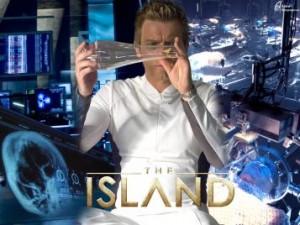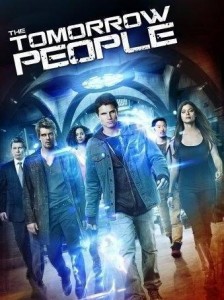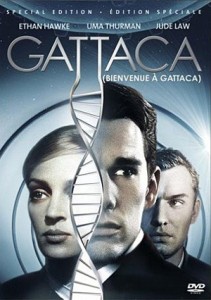Hollywood has developed an entire segment of their industry to futuristic movies that focus on the advancement of technology in relation to how we live. These movies demonstrate the seeminglessly integration of technology into our daily lives but always raise a critical dilemma of something going wrong. While these movies are almost always set 20 to 50 years in the future, the ending has always made me and I am sure many others contemplate: Could this really happen? How would we develop this technology? Should it even be acceptable? Hollywood films are often superficial and unrealistic, but they may have caught onto an arising moral dilemma. Try watching movies or tv shows like GATTACA, The Island, Captain America, The Tomorrow People, or Arrow and think about the implication if our society was like theirs.





An Author’s Opinion on Genetic Enhancement and Genetic Engineering:
Technology and science are always on the verge of a new discovery all of which have the potential to alter society. In the essay “The Case Against Perfection: What’s Wrong with Designer Children, Bionic Athletes, and Genetic Engineering,” Michael J. Sandel discusses the moral implications of genetic enhancement and engineering and delves further to examine how the human condition plays a part. Sandel goes on to explain how it is acceptable to use gene therapy and drugs to restore age appropriate health, but the moral quandaries develop when the therapies are utilized to achieve above normal health (Holland 94). Society attempts to use “the language of autonomy, fairness, and individual rights” when grappling with issues of genetic enhancement and genetic engineering (Holland 93). However, Sandel believes that such language only touches the surface and the real questions are about “the moral status of nature and about the proper stance of human beings toward the given world” (Holland 94). One of Sandel’s examples is genetic enhancement, which shows how the technology developed to treat a disease can spiral into common use.
Currently at the University of Pennsylvania, researchers have developed a synthetic gene that has shown to repair and strengthen muscles in rat and thus has possible human applications (Holland 94). This research is being done in hopes of curing immobility of the elderly or muscular dystrophy. Like with any research there are alternative and not as altruistic motives for which the research can be used, and so it is easy to imagine that professional athletes would capitalize on this technology. But if there were no ill effects, unlike with steroids, and it was widely available, then logically the genetic enhancement should not be banned (Holland 94). However this leave us with athletes who were already gifted with above normal strength now possessing superhuman strength. Sandel reasons that there is not an unfair advantage because the genetic enhancement just augment an athletes naturally endowed ability (Holland 94). Thus it cannot be said that enhanced genetic differences undermines fairness unless natural genetic differences also undermines fairness.
Hollywood’s Portrayal:
Let’s consider two different films, both about superheroes: Captain America and Arrow. Both successfully use genetic enhancement for strength; however, the result and long term implications are drastically different. In Captain America, the scrawny 90-lbs Steve Rogers is pumped full of drugs and put in a machine which permanently transformed him into a brawny 200-lb man of pure-muscle. As the film tells, scientists, part of the secret division of the Army, were seeking to create a “super-soldier” and Rogers was their test subject. Rogers uses his newfound abilities for and intrinsic bravery to risk his life to try and save the day. Rogers is a morally uplifting “good guy.” On the other hand, in the TV show Arrow, Cyrus Gold is injected with a serum that alters his DNA sequence to result in enhanced strength, durability, and stamina. Gold is evil and seeking revenge, for he is stealing and kidnapping people in order to make a group of super-villains like himself. Gold is a killer and definitely not someone who you want on your bad side. The videos below demonstrate the two ends of the spectrum that Hollywood has on muscle enhancement. It is clear to me that Hollywood, like the rest of the world, is not sure if it is morally sound to enhance humans, for it seems to depend on the intentional, moral, and true nature of the person being enhanced.
So should we only let the “good guys” be enhanced? And what if they become “evil killers”? Who gets to judge who and what makes a good person versus a bad person?
Captain America scene: http://www.youtube.com/watch?v=ijrtROGpqJ8
Arrow scene: http://www.youtube.com/watch?v=sfmrdbU3AoM
Sources:
Mone, Gregory. “Muscles in a Vial: Can a Single Shot Turn You Into Captain America?” LiveScience. TechMedia Network, 23 July 2011. Web. 02 Feb. 2014.
Sandel, Michael J. “The Case Against Perfection: What’s Wrong with Designer Children, Bionic Athletes, and Genetic Engineering.” Arguing About Bioethics. Ed. Stephen Holland. London: Routledge, 2012. 93-104. Print.
“Wikia.” Arrow Wiki. N.p., n.d. Web. 02 Feb. 2014.







